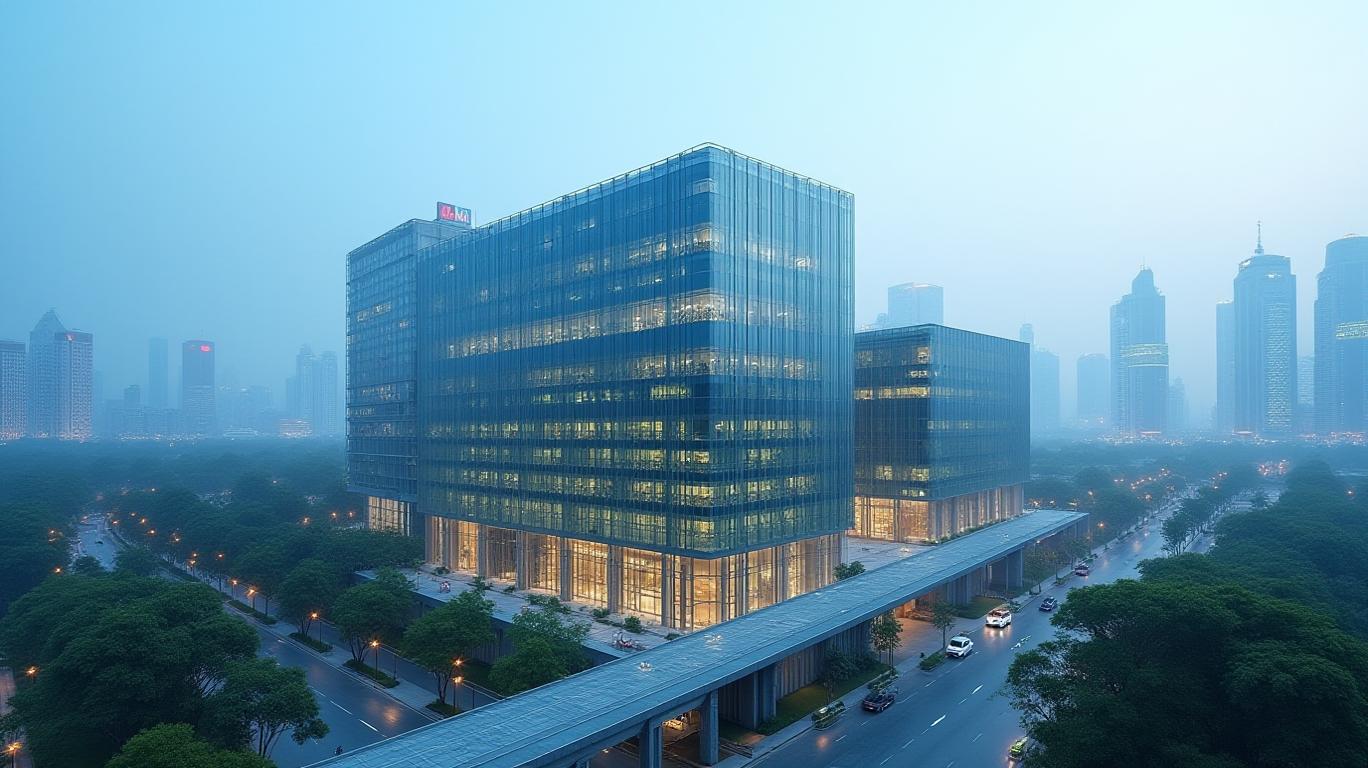Navigating the Storm: Why Nvidia's Shanghai Move Could Be a Strategic Masterstroke
The semiconductor industry's latest battleground is Shanghai, where
is carefully planting its flag while dancing through U.S. export controls. The company's decision to establish an R&D hub in China, despite escalating U.S.-China tech tensions, underscores a high-stakes balancing act between accessing Asia's booming AI market and avoiding regulatory landmines. For investors, this move presents both peril and promise. Let's dissect whether Nvidia's Shanghai gambit signals a sustainable path to growth or a cautionary tale of geopolitical overreach.
The Strategic Gamble: Compliance Meets Opportunity
Nvidia's Shanghai facility is no ordinary office park. By focusing on product optimization, design verification, and customer-specific chip adaptations, the company avoids violating U.S. export rules that prohibit transferring advanced GPU designs to China. This narrow scope allows Nvidia to retain ties to China's $50 billion AI market—now contributing just 13% of revenue—without forfeiting compliance. The facility's 2,000 employees will refine chips like the H20 and B20, downgraded to meet export restrictions, while steering clear of designing next-gen architectures like the Blackwell series, which still require U.S. approval.
The move reflects a pragmatic strategy: leverage local talent to address China's AI needs while keeping core innovation overseas. CEO Jensen Huang has framed this as a necessity, warning that ceding the market to rivals like Huawei's Ascend 910 or Baidu's DeepSeek would be a strategic disaster.
Regulatory Risks: A Double-Edged Sword
The U.S. export controls have already bitten hard. A $4.5 billion write-down in Q1 2025 and projected $8 billion in Q2 losses underscore the financial toll of restricted H20 sales. The broader risk lies in Washington's shifting rules. Recent U.S. actions—like the 721% countervailing duties on Chinese battery materials—highlight a willingness to weaponize tariffs, even as short-term tariff truces (e.g., May's 90-day rate reduction to 10%) offer fleeting relief.
Investors must ask: Is the U.S. creating a no-win scenario for firms like Nvidia? The answer may hinge on how China responds. Beijing's anti-dumping duties on U.S. POM copolymers and its push for semiconductor self-sufficiency suggest that tech decoupling is accelerating. If China successfully replaces Nvidia's GPUs with homegrown alternatives, the Shanghai R&D center's value could evaporate.
The Competitive Landscape: NVIDIA's Edge
Yet Nvidia's ecosystem dominance—CUDA, Omniverse, and DOCA—still commands 90%+ share in AI training workloads. Competitors like AMD or Chinese startups lack this software moat. Even as China invests in AI, its firms still rely on Nvidia's tools, creating a structural dependency. The Tesla/xAI $5 billion GPU deal—bolstering U.S. sales—also signals that global demand for AI infrastructure remains robust.
Geopolitical Crosscurrents: Can the Truce Hold?
The May 2025 tariff suspension—a reduction from 125% to 10%—is a fragile ceasefire. If U.S.-China talks fail, rates could revert to 34%, reigniting market panic. Meanwhile, Taiwan's role as a semiconductor manufacturing hub remains a vulnerability, as any geopolitical flare-up there could disrupt global supply chains.
Investment Verdict: Hold for the Long Game, Watch the Truce
The Shanghai R&D center is a strategic pivot, not a retreat. While short-term volatility persists—witness the stock's 18% dip in Q1 2025—the long-term AI market opportunity justifies patience.
Actionable Advice:
- Hold for now: Nvidia's ecosystem and global partnerships (e.g., Tesla/xAI) provide a floor. Historical backtests show that buying NVDA during similar write-down events (over 10% of revenue) and holding for 60 days yielded a 66.94% return, though with a high-risk profile (volatility of 36.59% and max drawdown of -47.51%).
- Monitor the tariff truce: If extended beyond August 2025, bullish momentum could resume.
- Avoid overexposure to China-specific plays: Huawei and Baidu's gains may come at NVIDIA's expense, but their software ecosystems remain unproven.
In the end, Nvidia's Shanghai bet isn't about winning the trade war—it's about surviving it. For investors, that means staying invested while keeping a wary eye on the horizon.
Final Take: NVIDIA's valuation may wobble, but its AI leadership and adaptive strategy make it a buy for the next decade—provided the geopolitical storm doesn't become a tsunami.

Comments
No comments yet